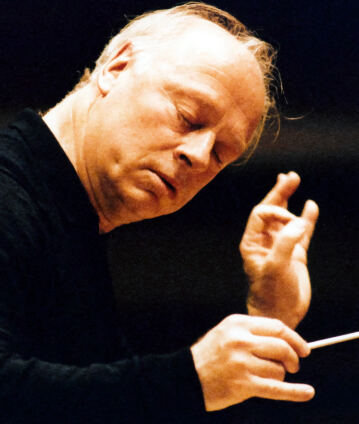Bernard Haitink conducts Mahler’s Third Symphony

Gustav Mahler’s Third Symphony is a musical exploration of the natural and human world that includes landscapes, animal and human voices, and the earthly and the transcendental. It ends with a hymn to love – both powerful and tender, and majestic and deeply human at the same time: one of the most moving final movements ever. The conductor of this performance is Bernard Haitink – a pioneer of last century’s Mahler renaissance.
When the Berliner Philharmoniker premiered the second movement of Gustav Mahler’s Third Symphony in November 1896 under the direction of their chief conductor Arthur Nikisch, it was still called Was mir die Blumen auf der Wiese erzählen. The first movement – according to the original plan – was accordingly entitled Pan erwacht. Der Sommer marschiert ein, and movements 3 to 6 were to deal with animals, people, angels and love. In the context of this programmatic sequence, it is striking that after the purely instrumental depiction of nature, plants and animals, the human voice is heard for the first time in the fourth movement – Was mir der Mensch erzählt – with a mezzo-soprano solo. As with the first two symphonies and the fourth, with which the third forms a group with their reference to the language and imagery of the Wunderhorn Lieder, Mahler also in this case withdrew the extra-musical descriptions of his music. The composer conceived the trilogy of symphonies 5 to 7 without an (obvious) programme from the outset.
Mahler’s indecision regarding absolute and programmatic music corresponds to the generally ambivalent attitude towards the possible form of new symphonies at the turn of the century. In his work, Mahler showed a very individual approach to the laws of form of the standard four-movement classical model. The composer’s Third and longest Symphony consists of six movements which are divided into two parts. The first of these is formed by the first movement alone, which has a playing time of over 30 minutes. After two movements – based on the model of the scherzo – and a look into the human abysses to the words of Friedrich Nietzsche, an angel’s song sung by mezzo-soprano and children’s choir is heard in great contrast, before an extended adagio as a hymn to love ends the work. Even without a poetic program, Mahler’s Third Symphony reveals itself to be a monumental exploration of the natural world and the human world, encompassing musical landscapes, animal and human voices, and the earthly and transcendental. The composer himself conducted the work with the Berliner Philharmoniker in 1907.
After his debut in 1964, Bernard Haitink conducted a Mahler Symphony with the Philharmoniker for the first time in 1971: the Fifth. Forty-six years after that, when the conductor performed the Ninth with the orchestra, the critic of the Tagesspiegel spoke of how Haitink “served the music faithfully and illuminated its beauties with the Philharmoniker”. The present performance of the Third was given in the 1990s, which corresponds to the middle phase of the conductor’s work with the Philharmoniker, when Bernard Haitink performed almost all of Mahler’s symphonies with the orchestra.
© 1990 EuroArts Music International